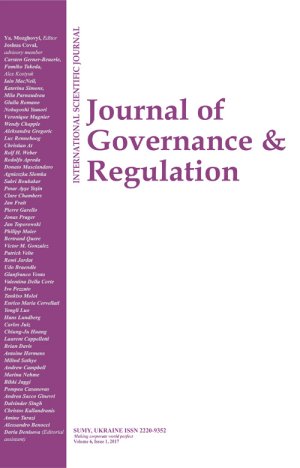
THE PARADOXICAL GENESIS OF TOO-BIG-TO-FAIL
Download This ArticleAbstract
At least since the Global Financial Crisis of 2007-2009, the problem of too-big-to-fail (TBTF) has received widespread attention. The research conducted in this context has, however, generally focused on the econometric aspect and the contribution of the TBTF doctrine to the financial crisis of 2007-2009, while the economic historical approach has been confined to tracing the doctrine to its first appearance. This paper attempts to fill this gap in the academic literature by offering an explanation for why, as opposed to how, the TBTF doctrine has developed. This paper identifies the US population’s distrust and at times hostility against the prospect of concentration of power in large financial institutions as the causal factor leading to the TBTF phenomenon. The resulting socially non-optimal regulation favoured a fragmented and fragile banking system based on small unit banks at the cost of more diversified branch banks. The Great Depression impressively highlighted the deep structural flaws of the US banking system. At the same time, however, it caused a shift in the public opinion, which had generally been opposed to deposit insurance, and thereby aligned the public interest with that of small banks, which would profit most from deposit insurance. The newly acquired public and political support enabled weak unit banks to lobby successfully against reforming the banking structure and instead for the adaption of federal deposit insurance. However, the Federal Deposit Insurance Corporation (FDIC) only addressed the symptoms of the weak banking industry but not its causes. Moreover, the strongly biased FDIC policies have generally favoured creditors at large banks, which ultimately led to the TBTF doctrine which, in turn, provided banks with a non-technical incentive to grow in size in order to gain TBTF protection. Initially aimed at preserving the US financial landscape based on small unit banks, the FDIC as the main conduit for TBTF rescues thus became the main driver for big bank corporate welfare. Deposit insurance gave rise to TBTF and, at the same time, put small banks deemed “too-small-to-safe” at a competitive disadvantage, further accelerating the trend towards increasingly large and complex banks.
Keywords: Deposit Insurance, Early Deposit Insurance Systems, Too-Big-to-Fail, Banks, Bank Failures, Economic Theory of Regulation, Capture Theory, Rent-Seeking, Regulation, Lobbying, Moral Hazard
How to cite this paper: Umlauft, T. S. (2014). The paradoxical genesis of too-big-to-fail. Journal of Governance and Regulation, 3(1), 28-41. https://doi.org/10.22495/jgr_v3_i1_p2



















